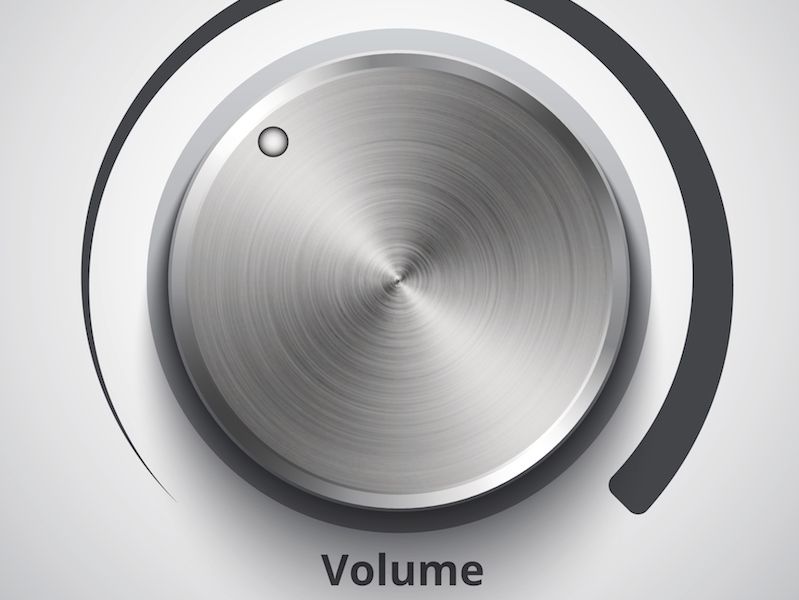
You ever go to the beach and noticed one of those “Beware of Shark” warning signs? It’s not hard to realize that you shouldn’t disregard a caution like that. You may even think twice about swimming at all with a sign like that (if the sign is written in big red letters that’s particularly true). But people usually don’t pay attention to warnings about their hearing in the same way for some reason.
Recent research has found that millions of people neglect warning signs regarding their hearing (this research specifically considered populations in the UK, but there’s no doubt the problem is more global than that). Part of the problem is awareness. Fear of sharks is pretty intuitive. But fear of loud noise? And the real question is, what’s too loud?
Loud And Dangerous Sound is Everywhere Around us
Your ears are not just in peril at a rock concert or construction site (not to minimize the hearing risks of these scenarios). There are potential risks with many every-day sounds. That’s because it isn’t only the volume of a sound that presents a danger; it’s also how long you’re exposed. Your hearing can be damaged with even low level sounds like dense city traffic if you’re exposed to it for more than a couple of hours at a time.
Generally, here’s an approximate outline of when loud becomes too loud:
- 30 dB: This is the volume level you would find in everyday conversation. At this volume, there won’t be any limit to how long you can safely be exposed.
- 80 – 85 dB: An air conditioner, heavy traffic, and lawn equipment are at this volume. After about two hours this level of sound becomes dangerous.
- 90 – 95 dB: Think of the noisiness of a motorcycle. 50 minutes is enough to be dangerous at this level of sound.
- 100 dB: This is the level of sound you might experience from a mid-size sporting event or an approaching subway train (depending on the city, of course). This volume can get dangerous after 15 minutes of exposure.
- 110 dB: Do you ever turn the volume on your earpods up as high as it will go? On most smartphones, that’s right around this level. This level of exposure becomes dangerous after only 5 minutes of exposure.
- 120 dB and over: Instant pain and damage can happen at or above this level (think about an arena sized sports event or rock show).
What Does 85 dB Sound Like?
Broadly speaking, you should look at anything 85 dB or higher as putting your hearing at risk. The issue is that it’s not always apparent just how loud 85 dB is. It’s not tangible in the way that a shark is tangible.
And hearing cautions frequently go ignored because of this when the sound environment isn’t loud enough to cause pain, this is especially true. Here are a couple of potential solutions:
- Get an app: Your ears can’t be immediately safeguarded with an app. But there are a few sound level metering apps. Damage to your hearing can occur without you realizing it because it’s difficult to recognize just how loud 85 dB feels. The solution, then, is to have this app working and keep track of the sound levels around you. This will help you establish a sense for when you’re going into the “danger zone” (Or, the app will simply tell you when things get too loud).
- Suitable training and signage: This especially pertains to workspaces. Training and signage can help reinforce the significant risks of hearing loss (and the advantages of protecting your hearing). Signage could also inform you just how loud your workplace is. Helping employees know when hearing protection is recommended or necessary with proper training can be really useful.
If You’re in Doubt, Protect Yourself
Apps and signage aren’t a foolproof answer. So when in doubt, take the time to protect your hearing. Over a long enough period of time, noise damage will almost certainly create hearing issues. And it’s easier than ever to injure your ears (all you need to do is turn your earpods up a little too high).
If you’re listening to headphones all day, you should not raise the volume past the mid-mark. If you keep cranking it up to hear your music over background sound you should find different headphones that can block out noise.
So when volume becomes too loud, it’s important to accept it. Increasing your own knowledge and awareness is the key if you want to do that. Protecting your ears, using ear protection, or decreasing your exposure, is easy enough. But you have to recognize when to do it.
Nowadays that should also be easier. Especially now that you understand what to be aware of.
Think you could have hearing loss? Schedule an exam.
